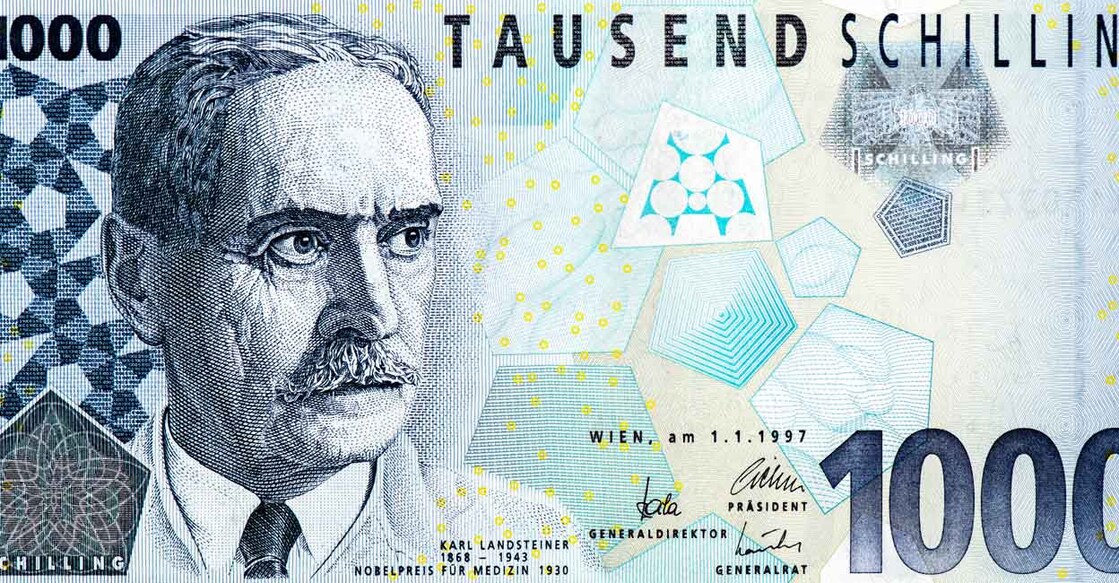Karl Landsteiner: The man who discovered blood groups, which divide and unite us

Mail This Article
We are all familiar with our blood groups, namely A, B, AB and O. Many of us also know about the existence of negative and positive blood groups. The story of discovering the existence of different blood groups in humans is full of bold and daring men, who travelled the lesser known paths, with many misadventures, mishaps and misfortunes. The experiments to make blood transfusion safe as we experience today had cost the lives of several men and women.
The saga of blood starts from prehistoric times, with early cavemen associating the red fluid to life. Hippocrates, the father of Medicine considered blood as humour along with phlegm, black bile and yellow bile. Any imbalance to the four humours would cause illness. The concept of bloodletting to cure illness was first put forward by Cladius Galen, who believed that blood is made in liver from the food we ate. William Harvey who described the circulation of blood within blood vessels, through his monograph ‘Excertatio Anatomica de Motu Cordis et Sanguinis in Animalia’ (The Anatomical Exercises concerning the Motion of the Heart and Blood in Animals) compared blood to the city’s water sewerage system.
Successful animal to animal transfusions paved the way for animal to human transfusions. Soon transfusion reactions and death after transfusions were reported, the French Parliament, British Royal Society, Vatican (1679) and Magistrates in Rome imposed prohibitions on it leading to a 150-year near-complete hiatus in any form of blood transfusions.
James Blundell an obstetrician of London is credited with carrying out the first man to man successful blood transfusion in 1818, using his own improvised devices. He was also the first to state that transfusion should occur only intra-species, i.e., for humans only human blood should be employed. Adverse transfusion reactions, in the form of haemolysis (blood cells undergoing lysis), poor flow due to clotting, infections and agglutination (sticking together of blood cells) was encountered. Infections were controlled with better antiseptics and problems due to blood getting clotted was resolved with use of anticoagulant solutions which could now be sterilised to minimise infection risks.

But oddly, some incompatibility issues still persisted leading to haemolysis and agglutination after transfusion. The credit for breaking this secret largely goes to Karl Landsteiner, an Austrian biologist and physician. In 1901, Landsteiner carried out experiments using six samples of blood, 5 from his colleagues who worked in the same building as he, along with his own blood. He separated the serum (liquid part of blood after clotting without the blood cells in it) and red cells and tested it with each other among these six samples. He observed that the red cells did not react with their own serum, but when tested with red cells from another sample, showed agglutination. In this way, he identified three blood types and called A, B and C (C was later re-named as O for the German “Ohne”, which means “without”, or “Zero”, “null” in English). For this remarkable work, he was awarded the Nobel Prize for Medicine in 1930.
AB blood group was discovered by Adriano Sturli and Alfred Von Decastello, students of Landsteiner, while working with him. Landsteiner is also credited with the discovery of Rh and MN and P blood group systems.
1907 witnessed the first crossmatch compatible blood transfusion at Mount Sinai Hospital in New York under Dr. Reuben Ottenberg. This made blood transfusions become much safer, yet some patients still developed reactions to transfusions. In the subsequent years more blood group systems came to be discovered by several investigators across the world.
India has several unique contributions in the field of discovering new blood group systems, including a blood group system named Indian. Another is the Bombay blood group system, which was discovered by Dr. Y. M. Bhende, C.K. Deshpande and Dr.H.M.Bhatia in 1952 at Blood group Reference Centre, KEM Hospital, Mumbai. Bombay group individuals are unique in that their sera will agglutinate all other blood types, except another Bombay group red cell. As a result, Bombay group individuals can receive blood from another Bombay group person only.

Today is the 153th birth anniversary of Karl Landsteiner, who is rightly called the Father of Transfusion Medicine. To honour his contributions to ensure a safe blood transfusion, World Health Organisation started celebrating June 14 as World Blood Donor’s Day from 2005 onwards to raise global awareness for safe blood and blood products for transfusion and the critical contribution made by voluntary blood donors toward this.
For 2021, WHO has chosen the slogan “Give blood and keep the world beating”. Even though we appear different in race, colour, gender, dress, food habits, language and so on, the blood unites us all. Donate blood regularly and keeping the world pulsating.
(Dr Amita Radhakrishnan Nair is the Assistant Professor, Transfusion Medicine, Sree Chitra Tirunal Institute for Medical Sciences and Technology, Thiruvanathapuram.)

